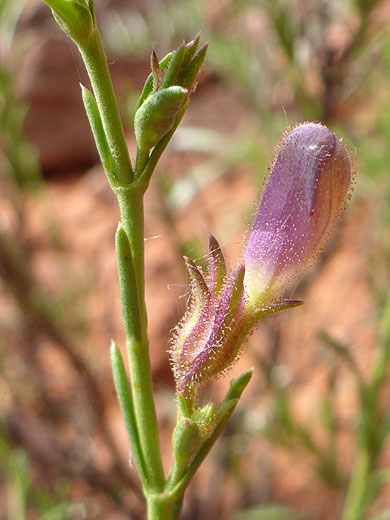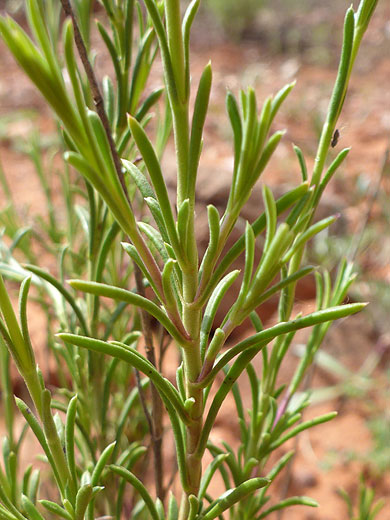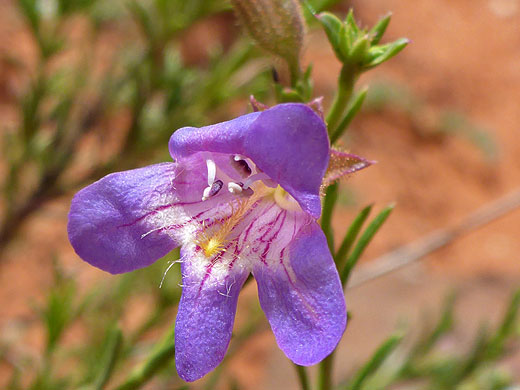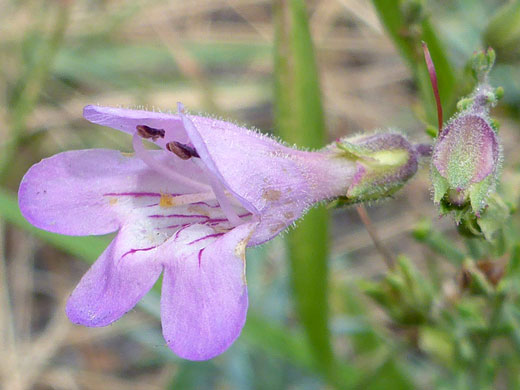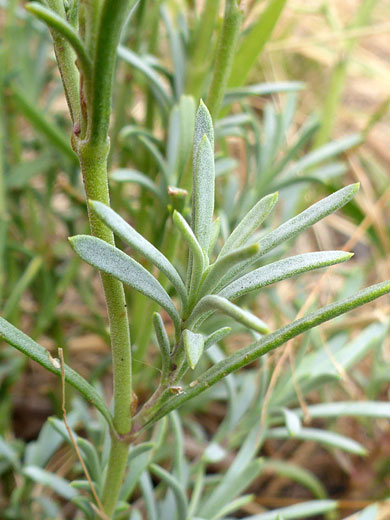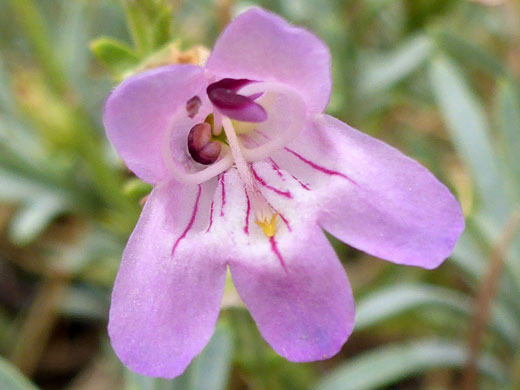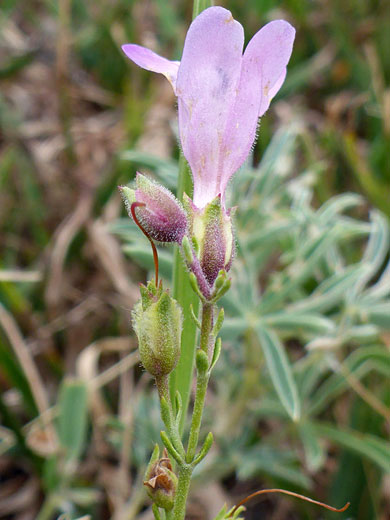Penstemon Linarioides, Toadflax Penstemon
Plants > Wildflowers > Plantaginaceae > Penstemon Linarioides
Common names:
Toadflax penstemon, narrowleaf beardtongue
Family:
Scientific name:
Penstemon linarioides
Main flower color:
Range:
Arizona, and adjacent regions of New Mexico, Colorado, Utah and Nevada
Height:
Up to 2 feet
Habitat:
Hillsides, roadsides, woodland clearings, often in limestone locations; 4,500 to 9,000 feet
Leaves:
Light green, linear, narrow, up to 0.8 inches long
Season:
April to August
Leaves of penstemon linarioides are quite distinctive, being short, narrow and linear, topped by a small spike, and angled upwards, at 45 degrees or less from the stem. Leaves grow all along the stem; those on the upper portion subtend the flower clusters. Stems are ascending to erect. Leaves have a light covering of fine, short hairs.
Flowers are colored pale lavender to dark, bluish purple. They have two upper lobes, often recurved, and three lower lobes projecting forwards and partly downwards. The throat of the corolla is white, crossed by dark pink veins. The staminode (infertile stamen) lies against the lower lobes and is covered by long brown hairs. The four stamens are close to the upper lobes; the filaments are white, hairless, and curved, while the anthers are purple. Flowers tend to form on one side of the stem only. Calyx and corolla are glandular.
There are five subspecies. Ssp coloradoensis of the Four Corners area is a low-growing variety with a less-hairy staminode. Ssp linarioides is taller, with paler pink corollas, and is found in Arizona and New Mexico. Ssp compactifolius of central Arizona and far south Nevada also has short stems, and more closely-spaced leaves. Ssp sileri has perhaps the widest range, from central Utah to south Arizona; this is characterised by leaf hairs that are appressed rather than spreading, and stems that are woody at the base. By far the least common variety, ssp maguirei has leaves that are narrowly oblanceolate instead of linear.
Flowers are colored pale lavender to dark, bluish purple. They have two upper lobes, often recurved, and three lower lobes projecting forwards and partly downwards. The throat of the corolla is white, crossed by dark pink veins. The staminode (infertile stamen) lies against the lower lobes and is covered by long brown hairs. The four stamens are close to the upper lobes; the filaments are white, hairless, and curved, while the anthers are purple. Flowers tend to form on one side of the stem only. Calyx and corolla are glandular.
There are five subspecies. Ssp coloradoensis of the Four Corners area is a low-growing variety with a less-hairy staminode. Ssp linarioides is taller, with paler pink corollas, and is found in Arizona and New Mexico. Ssp compactifolius of central Arizona and far south Nevada also has short stems, and more closely-spaced leaves. Ssp sileri has perhaps the widest range, from central Utah to south Arizona; this is characterised by leaf hairs that are appressed rather than spreading, and stems that are woody at the base. By far the least common variety, ssp maguirei has leaves that are narrowly oblanceolate instead of linear.
All Contents © Copyright The American Southwest | Comments and Questions | Contribute | Site Map


